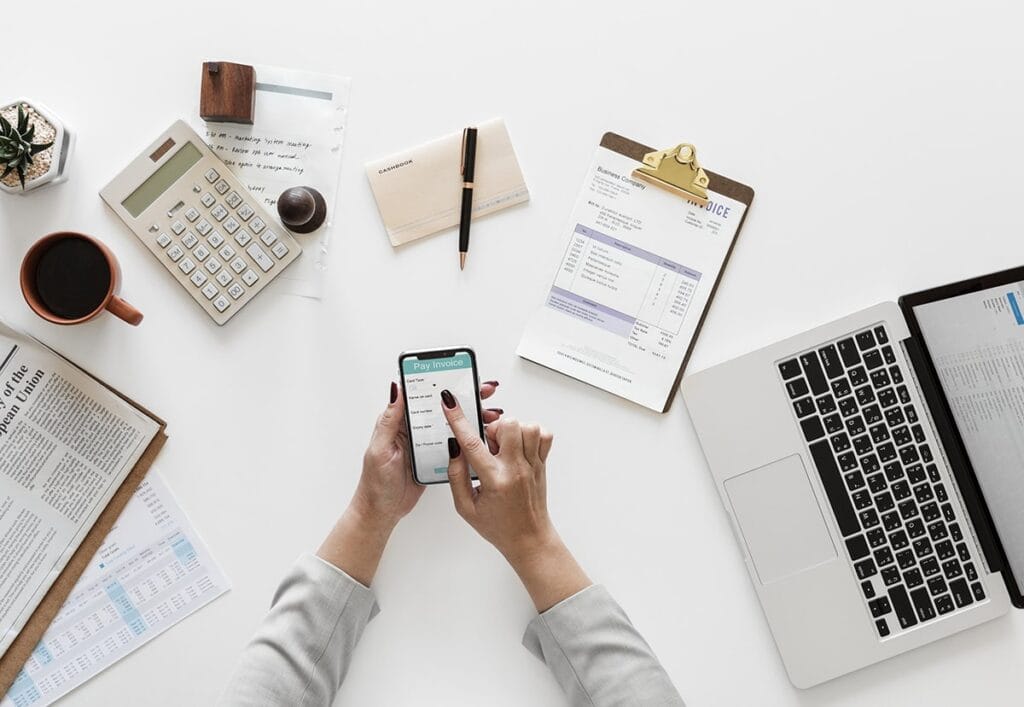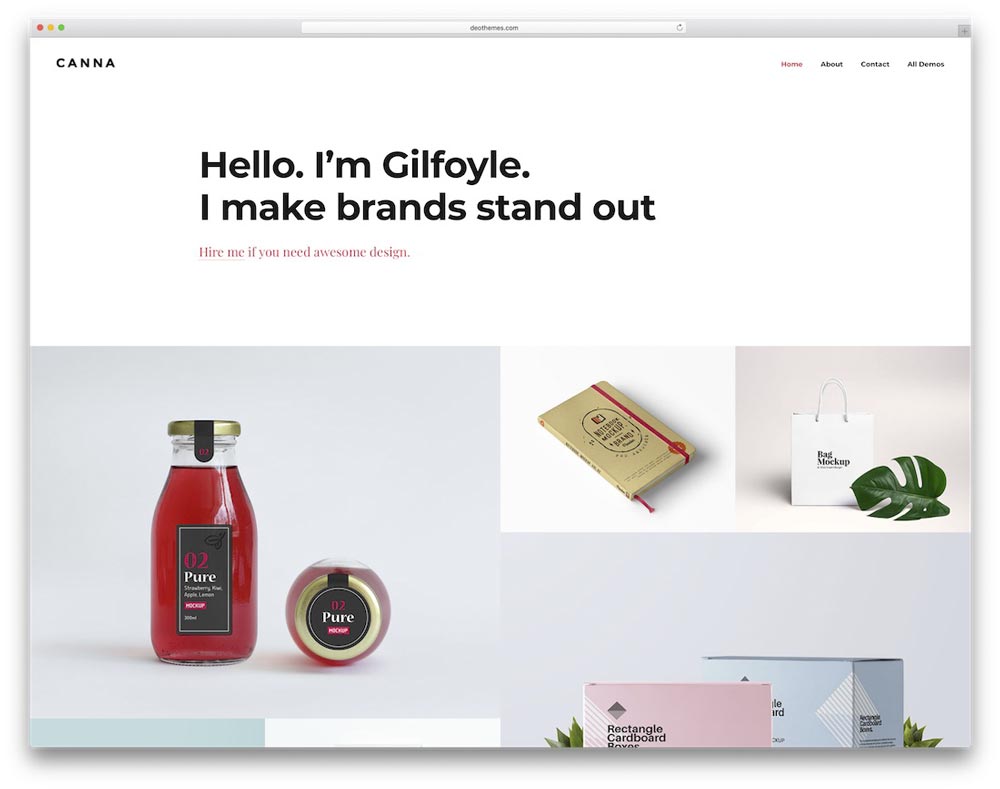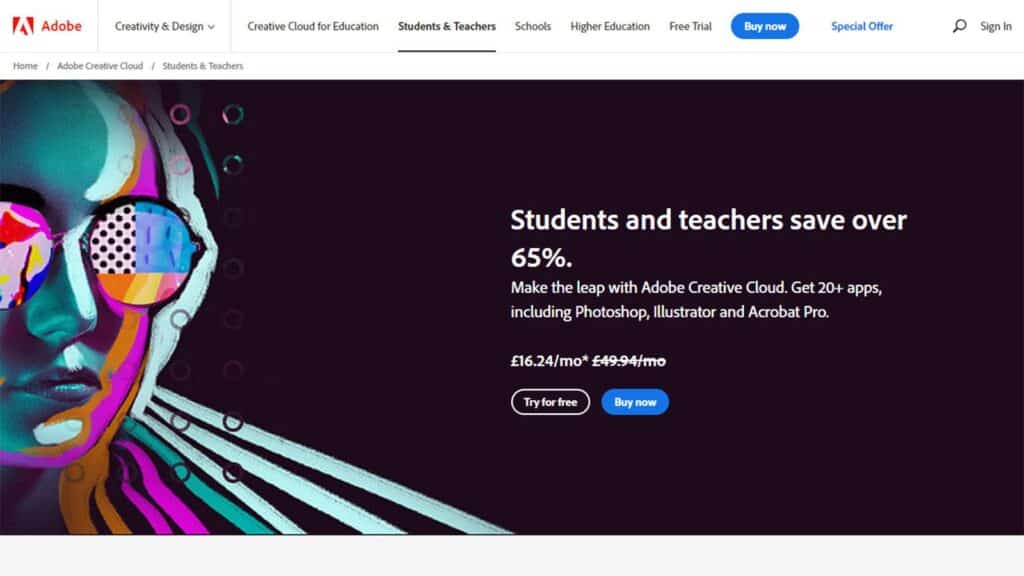How to Become a Successful Freelance Graphic Designer
So, you want to become a freelance graphic designer? Awesome! It's an exciting career path that allows you to blend your creative passion with the freedom of working for yourself. But before you hand in your notice and go all-in on the freelance life, there are a few key steps to consider first.
The most important thing is ensuring you have the design skills and experience to thrive as a freelancer. Build your portfolio by taking courses, practising your craft, and getting real-world experience through internships or volunteering. Work on projects for causes or companies you genuinely care about – it'll help you create designs you're proud of.
Once your skills are up to scratch, it's time to get down to the business side. Choose a great name for your freelance design business and get it registered correctly. Set up a separate business bank account to keep your finances in order. Remember insurance, too! Consult with an accountant to understand your tax obligations – keeping track of deductibles and estimated quarterly taxes is crucial as a freelancer.
The next significant milestone is building an impressive portfolio that shows off exactly what makes you tick as a designer. Curate eye-catching pieces that reflect the projects you want to work on. Use your portfolio to start networking and reaching out to potential new clients. Set competitive but fair rates that reflect your level of experience and expertise.
Freelancing allows you to chart your course, but careful planning is critical! Take it step-by-step; before you know it, you'll live the freelance graphic designer life. Exciting times ahead!
Table of Contents
The Importance of Business Skills in Freelancing

To be a successful freelance graphic designer, more is needed to be proficient in design. You also need to develop strong business and management skills. As a freelancer, you are essentially running a small business. This means you must understand the basics of accounting, marketing, contract law, and client relationship management. You may need to take on multiple roles, including CEO, COO, head of sales, director of client delivery, head of client success, head of finance, manager, and employee. For instance, as the head of sales, you'll need to seek out potential clients and negotiate contracts actively. As the head of client delivery, you'll need to ensure that projects are completed on time and to the client's satisfaction.
In addition to wearing multiple hats, shifting your mindset from being a labourer to offering outcomes is crucial. This means understanding your client's needs and showing them how your designs can help achieve their goals. For example, if you're designing a logo for a new startup, instead of simply providing them with a visually appealing design, show them how the logo represents their brand and can attract their target audience. Continuous learning and development are essential to stay ahead of industry trends and technologies. This might involve attending webinars, enrolling in online courses, or reading the latest design books and magazines.
Legal Compliance for Freelance Graphic Designers
Navigating the legal landscape of freelancing can be daunting, but it's a necessary part of running your business. You must ensure that you operate within the legal boundaries set by your local, state, or national laws. This can involve obtaining the necessary work permits or permissions, registering your business, and understanding copyright laws related to your work. For example, if you're a non-U.S. citizen looking to freelance in the U.S., you may need to apply for an appropriate visa that allows self-employment.
Seeking advice from legal experts, such as lawyers, can help you navigate these legal requirements. They can guide you on issues such as drafting and reviewing contracts, handling disputes, and protecting your intellectual property. It's recommended to consult a lawyer before signing contracts with clients to protect your rights. For instance, your lawyer can ensure that your agreement includes clauses that protect you in the event of non-payment or the client making unreasonable demands.
Essential Skills and Qualifications for Freelance Graphic Designers
In addition to the primary skill of graphic design, successful freelancers need to possess various other skills and qualifications. These range from technical skills related to specific design software to soft skills such as communication, time management, and problem-solving. For example, graphic design often requires proficiency in Adobe Creative Suite, which includes software such as Photoshop, Illustrator, and InDesign.
It's equally essential to shift your mindset from labour to offering outcomes. This means focusing on how your designs can solve a client's problem or meet their needs rather than just delivering a product. For example, if a client needs a new logo, show them how your design can improve brand recognition and appeal to their target audience. Continuous learning and development are crucial to staying updated with industry trends and technologies. This could involve regularly attending webinars, enrolling in online courses, or reading the latest design books and magazines.
Building a Strong Graphic Design Portfolio

A strong portfolio is one of the most critical assets for a freelance graphic designer. Your portfolio is your opportunity to showcase your skills, creativity, and style to potential clients. It should include a selection of your best work, demonstrating a range of styles and techniques. For example, if you specialise in logo design, your portfolio might consist of logos you've designed for various businesses, showing your versatility and ability to adapt to different brand identities.
In addition to showcasing your work, your portfolio can also serve as a platform for you to express your brand. This involves creating a consistent visual and narrative identity representing you as a designer. For example, choose a specific colour palette and typeface for your portfolio website that reflects your design aesthetic. Your brand should also be reflected in your interactions with clients, social media presence, and other touchpoints with the outside world.
Building a robust online presence is crucial for attracting clients. This can be achieved by creating a professional website to showcase your portfolio, maintaining active profiles on social media platforms, and participating in online design communities. These platforms allow you to showcase your work to a global audience, connect with potential clients, and stay updated with industry trends. You can also use SEO techniques to improve the visibility of your website in search engine results, making it easier for potential clients to find you.
Finding Freelance Graphic Design Clients
Finding clients is one of the most challenging aspects of freelancing, but it's crucial for maintaining a steady workflow. There are several strategies you can use to find freelance graphic design clients. Job boards and freelancer marketplaces are a good starting point. Websites like Upwork, Freelancer, and Behance regularly post freelance opportunities in graphic design. However, these platforms can be competitive, so having a solid portfolio and proposal is essential to stand out.
Networking is another effective strategy for finding clients. This can involve attending industry events, joining online communities, or contacting your existing contacts. For example, you might attend a local design conference and connect with businesses looking for freelance designers. Or you could join a design forum and participate in discussions, making valuable connections and gaining visibility in the process.
When reaching out to potential clients, it is essential to focus on their needs and how your skills can help solve their problems. This involves understanding their business, their target audience, and their goals. For example, if a potential client is a startup looking to build their brand, you could explain how your design skills can help create a strong brand identity that resonates with their target audience. Focusing on your value makes you more likely to win the client over.
Pricing and Negotiating as a Freelance Graphic Designer
Setting your rates and negotiating with clients can be tricky, especially when starting. There are several factors to consider when determining your pricing, including your experience level, the complexity of the project, and market rates. It's essential to research what other freelance graphic designers in your area and field are charging to ensure your rates are competitive. For instance, logo designers in your city typically charge a specific range per logo, which can guide your pricing decisions.
You can adopt several pricing strategies, including project-based, hourly, or retainer-based pricing. Project-based pricing involves setting a flat fee for a specific project, while hourly pricing charges a fixed rate for each hour of work. Retainer-based pricing consists of a client agreeing to pay a set fee for a certain amount of work each month. The best approach depends on the nature of the work and your personal preference. For example, an hourly rate might be more appropriate if a project involves a lot of uncertainty or changes. However, a project-based fee could be more suitable for a straightforward task with a clear brief.
When negotiating with clients, being transparent about your fee and standing your ground on your rates is essential. It's also crucial to have a contract outlining the scope of work, payment terms, and other necessary details. This protects both you and the client and ensures there are clear understandings down the line. For example, your contract could specify that you require a 50% deposit before starting work, with the balance due upon project completion.
Recommended Graphic Design Software and Tools

You must be proficient in various design software and tools as a freelance graphic designer. Adobe Creative Suite, which includes Photoshop, Illustrator, and InDesign, is the industry standard for graphic design. These programs allow you to create various formats, from logos and illustrations to layouts and typographies. Mastery of these programs can significantly enhance your productivity and the quality of your work.
Besides design software, several other tools can help streamline your workflow and manage your business. These include business administration tools like banking, invoicing, and payment acceptance platforms. For example, tools like QuickBooks or FreshBooks can help you track your income and expenses, send invoices, and manage your finances.
Project management and communication tools are essential for coordinating with clients and managing your projects. Tools like Trello or Asana can help you keep track of your tasks, deadlines, and project progress. Communication tools like Slack or Google Meet can facilitate client collaboration and communication.
Consider leveraging SEO and social media platforms to promote your work and attract potential clients. SEO can help improve the visibility of your website in search engine results, making it easier for potential clients to find you. Social media platforms like Instagram or LinkedIn can showcase your work, engage with your audience, and build your brand.
Setting Goals and Planning Finances
Setting clear business goals is essential for guiding your actions and measuring your progress as a freelance graphic designer. These goals could be related to your income, the type of projects you want to work on, or the growth of your client base. For example, set a goal to earn a certain income in your first year of freelancing or to work with a specific number of clients.
Financial planning is also crucial for managing your income and expenses as a freelancer. Creating a budget that accounts for your business expenses, such as software subscriptions, marketing costs, and taxes, is essential. You should also plan for personal expenses and set aside money for savings and retirement. For example, set a goal to save 20% of your income for retirement and build an emergency fund that can cover 3-6 months of expenses.
Keeping track of your finances involves regularly reviewing your income and expenses and adjusting as needed. This could include cutting unnecessary costs, increasing your rates, or attracting more clients. Reviewing your financial situation can help you stay on track towards your financial goals and ensure the sustainability of your freelance business.
Dealing with Clients and Contracts
Dealing with clients and contracts is a crucial part of freelancing. It's essential to have a straightforward process for onboarding new clients, managing projects, and handling payments. This includes setting clear expectations with your clients, providing regular updates, and delivering quality work on time. For example, at the start of a project, you might provide your client with a detailed timeline outlining each project stage and the expected completion dates.
Contracts are a vital aspect of working with clients. A well-drafted contract can protect your rights, outline the scope of work, and ensure you get paid for your work. It's important to include clauses that specify the payment terms, the ownership of the work, and the procedure for making changes or revisions. For instance, your contract might specify that you retain ownership of the work until full payment is received and that any changes to the scope of work will incur additional charges.
Managing client relationships is a delicate skill that involves clear communication, professionalism, and empathy. It's essential to listen to your client's needs and feedback and respond promptly and respectfully. Dealing with demanding clients can be challenging, but by maintaining a professional attitude and focusing on finding solutions, you can turn these situations into opportunities for growth and learning.
Scaling and Growth in Freelance Graphic Design

As your freelance graphic design business grows, consider strategies for scaling and expanding your business. This could involve partnering with other freelancers or agencies, offering additional services, or teaching design courses. For example, you might partner with a web developer to provide full-service web design solutions or start a blog where you share design tips and tutorials.
Networking and building connections in the industry can also contribute to your business growth. You can build valuable relationships by attending design events, participating in online communities, and connecting with other professionals, leading to new opportunities and collaborations. For instance, you might meet a fellow designer at a conference who later refers a client to you.
Perseverance and flexibility are critical attributes for succeeding in freelance graphic design. The freelance journey can be filled with ups and downs, and adapting to changing circumstances and persisting in the face of challenges is essential. Whether dealing with a difficult client or navigating a slow period, maintaining a positive attitude and a proactive approach can help you navigate these challenges and become stronger.
Work-Life Balance as a Freelance Graphic Designer
Maintaining a healthy work-life balance is a crucial aspect of freelancing. As a freelancer, it can be easy to blur the lines between work and personal life, leading to stress and burnout. It's essential to set clear boundaries and designate specific working hours. For example, you can work from 9 a.m. to 5 p.m. on weekdays and take the weekends off to rest and recharge.
Creating a productive work environment can also contribute to a better work-life balance. This involves setting up a dedicated workspace, minimising distractions, and organising your work to promote efficiency and focus. For example, you could work in a quiet room in your home, away from household distractions. Using productivity tools and techniques, such as time blocking or the Pomodoro technique, can help you manage your time more effectively.
Another important aspect of work-life balance is planning for retirement and regularly contributing to savings. As a freelancer, you're responsible for your retirement planning. Setting aside a portion of your retirement income and investing in a retirement savings plan that suits your needs and goals is essential. For example, you could contribute to a Roth IRA or a solo 401(k) plan.
The Role of Personal Branding in Freelance Graphic Design
Personal branding plays a crucial role in distinguishing yourself in the competitive field of freelance graphic design. Your brand is the unique combination of your skills, experiences, and personality that you present to the world. It sets you apart from other designers and attracts clients who resonate with your style and values. For example, if your design style is minimalist and modern, your brand should reflect this through your portfolio, website design, and communication style.
Creating a cohesive visual language for your brand involves creating a consistent look and feel across all your brand touchpoints. This includes your logo, website, portfolio, social media profiles, and email signature. For example, you might choose a specific colour palette and typeface that reflects your design style and use it consistently across all your brand materials.
Promoting your brand is an ongoing process that involves regularly sharing your work, engaging with your audience, and positioning yourself as an expert in your field. You can use social media platforms, blogs, and portfolio websites to showcase your work and share your design process. Participating in design communities and events can also help raise your profile and establish your reputation in the industry.
The Financial Aspects of Freelance Graphic Design
Managing your finances is crucial to running a successful freelance graphic design business. This involves keeping your invoices and payments, making a yearly budget, and planning for significant expenses. For example, you might use accounting software to manage your invoices and costs and create a spreadsheet to track your income and expenses.
Planning for significant expenses is an essential part of financial planning. This could include investing in new software or hardware, attending design conferences, or enrolling in professional development courses. By anticipating these expenses and having them in your budget, you can avoid financial stress and ensure your business continues to grow.
Setting up a financial bookkeeping system can help you stay organised and make tax time less stressful. This involves keeping track of all your business-related expenses, such as software subscriptions, office supplies, and travel expenses, as these can be deducted from your income for tax purposes. You can use bookkeeping software or hire a bookkeeper or accountant to manage your finances.
The Challenges and Rewards of Freelance Graphic Design
Freelancing as a graphic designer comes with its share of challenges and rewards. One of the main challenges is the unpredictability of freelance work. There may be periods of feast or famine, where you have more work than you can handle or when work is slow. It's essential to be prepared for these fluctuations by saving for a rainy day. For example, you might aim to save enough to cover 3-6 months of expenses to tide you over during slow periods.
Despite the challenges, the rewards of freelancing can be significant. Freelancing offers the freedom to work on projects you are passionate about, set your schedule, and have control over your career. It allows you to shape your work life around your personal needs and goals rather than fitting your life around a 9-to-5 job. For instance, you may work early in the morning or late at night, depending on your personal preferences and productivity patterns.
Perseverance and flexibility are crucial to navigating the challenges and enjoying the rewards of freelancing. Whether it's learning new skills to meet a client's needs, adapting your schedule to meet a deadline, or persevering through a slow period, these qualities can help you build a successful and fulfilling freelance career.
